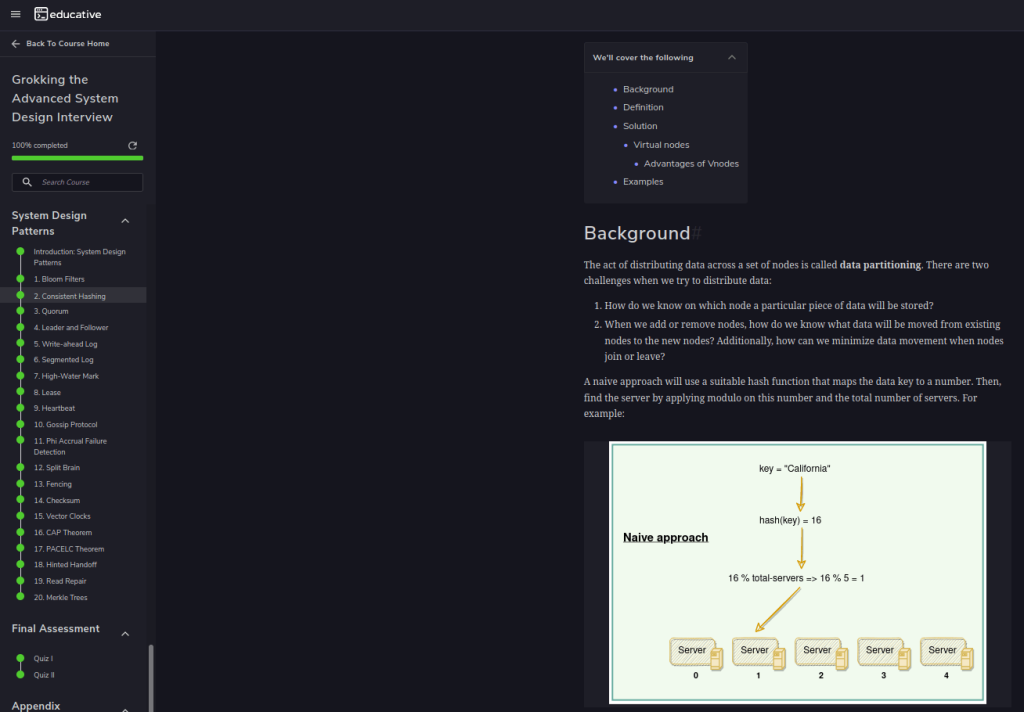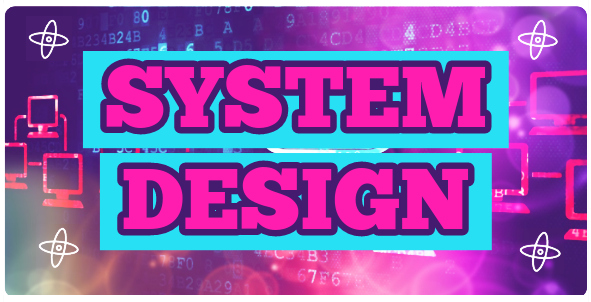Table Of Content
- Steps how I approach the system design questions in interviews
- Grokking the System Design Interview The #1 Online Course
- Grokking the System Design Interview: A Step by Step Guide to Master the System Design Interview
- I am a complete beginner to programming. How can I get experience with System Design?

Explore examples like designing a social media feed system, a ride-sharing service, or a distributed messaging platform. Understand the challenges faced in each scenario and learn from the design choices made to overcome them. When proposing a high-level design, consider the various technologies and architectural patterns that can be used. For instance, in the ride-sharing service, you might consider using a microservices architecture to decouple different functionalities like user management, ride matching, and payment processing. Furthermore, system design is closely related to problem-solving and critical thinking skills, which are highly valued in the tech industry.
Steps how I approach the system design questions in interviews
Scalability only matters if customers want to stick around in the first place. Returning to Google Cloud Spanner, this system represents the type of case study that could turn up in an Advanced System Design interview. At the same time, the Low-Level OOD interview remains one of the most common types of design interviews you’ll encounter during tech interviews. Coming into these interviews with a solid grasp of object-oriented design patterns will put you at a massive advantage. Crossing this gap between engineering levels can take a long time and it’s not something worth rushing. After you are intimately familiar with what your team is working on and comfortable with the example talking points above, start paying attention to some crucial soft skills.
Grokking the System Design Interview The #1 Online Course
This interview process can be quite challenging, even for experienced software engineers. Having gone through several system design interviews myself, I found that the best way to prepare is through a dedicated course that focuses on this topic. That's when I came across Grokking the System Design Interview, a course that claims to offer comprehensive guidance on this subject. One common system design interview question involves designing a social media feed system. In this case, you would need to consider the scalability of the system to handle a large number of users and their posts.

Grokking the System Design Interview: A Step by Step Guide to Master the System Design Interview
By walking through the aspects of System Design in RESHADED, we can determine the areas where a strong-hire candidate communicated the right technical information at the right time. To read more about different engineering levels, how they approach an SDI, and developing soft skills for the SDI, please check out our new, free course, The System Design Interview Prep Handbook. The best way to approach a System Design Interview is to structure the conversation around the acronym RESHADED. It represents a high-level strategy for designing just about any system from the bottom up.
They offered a structured and comprehensive template that I could use to approach any system design interview. It covered all the essential components, ensuring I wouldn’t miss any critical points while designing large-scale systems. Having this template at my disposal gave me the confidence to tackle even the most challenging system design questions with ease.
Breaking down the System Design Interview: 20 things engineers want to know
They had also meticulously curated courses with essential patterns like fast and slow pointers, sliding windows etc to accelerate my preparation for coding interviews. Instead of just learning theoretical concepts, I was able to see how these ideas were applied in actual industry scenarios. It helped me develop a deeper understanding of how large-scale systems are designed and implemented, which I knew would be invaluable in my interviews. I was immediately intrigued by looking at their diagrams like the one shown above and their promise to prepare me comprehensively for system design and coding interviews, so I decided to give it a shot. In short, preparation and being organized during the interview are the keys to be successful in system design interviews. The steps mentioned above should guide you to remain on track and cover all the different aspects while designing a system.

When explaining your design decisions, break down complex concepts into smaller, digestible pieces. Use diagrams, flowcharts, or any visual aids that can help you convey your ideas more effectively. This will make it easier for the interviewer to follow along and understand your thought process. When faced with a system design problem, it is important to approach it systematically. Take the time to clarify any ambiguities and ask questions to gain a deeper understanding of the problem domain. This will help you frame the problem in a way that allows you to design an effective solution.
Analyzing and Answering Design Questions
Make sure you understand low-level, object-oriented design first, and then you can get started prepping for your eventual System Design interview. It’s also worth joining for people who are not familiar with System design and software design concepts like SQL vs NoSQL, Scalability, resiliency, fault tolerance, active-active, and active-passive architecture. You can see that the course covers some of the most essential topics when it comes to designing a real-world system.
It involves implementing mechanisms such as redundancy, replication, and error handling to ensure that the system can recover from failures and continue to provide uninterrupted service. Join the Educative community of learners, and develop a solid foundation in system design. We’re proud of all the work that went into making Grokking Modern System Design for Software Engineers & Managers and can’t wait to see the impact it has on your career.
Familiarize yourself with these topics and ensure you understand the underlying principles. It involves designing and implementing complex software systems, ensuring they are scalable, reliable, and performant. System design interviews assess a candidate's ability to solve real-world problems by designing system architectures. System design interviews have become an integral part of the hiring process in the tech industry.
This interview is meant to test a candidate's problem-solving skills, technical knowledge, and communication abilities. It usually involves designing a system that meets specific requirements, such as handling a large number of users or processing large amounts of data. When faced with a system design question, start by clarifying and understanding the requirements. Break down the problem into smaller components and prioritize the most critical aspects. Propose a high-level design, considering scalability, fault tolerance, data consistency, and availability. System design interviews typically involve solving a real-world problem by designing a system architecture.
Lakshman’s experience working on DynamoDB allowed him to incorporate proven techniques to improve and expand an existing design. You’ll need to practice this general approach as you prepare to solve various problems in the System Design interview. When I first started interviewing for software engineer positions, Low-Level OOD interviews were the only type of design interview you’d find yourself in. System Design and scalable systems weren’t as integral as they are today because large-scale distributed systems were relatively uncommon. Unlike coding interviews, technical design interviews require thinking in broader, systemic terms. For these interviews, you must learn to weigh different tradeoffs between possible solutions and then provide justifications for the solutions you choose.
Investing in scaling before it is needed is generally not a smart business proposition; however, some forethought into the design can save valuable time and resources in the future. In the following chapters, we will try to define some of the core building blocks of scalable systems. Familiarizing these concepts would greatly benefit in understanding distributed system concepts. In the next section, we will go through Consistent Hashing, CAP Theorem, Load Balancing, Caching, Data Partitioning, Indexes, Proxies, Queues, Replication, and choosing between SQL vs. NoSQL.
Consistency & Consensus for System Design Interview (4): implementing causality - Medium
Consistency & Consensus for System Design Interview ( : implementing causality.
Posted: Sun, 03 Sep 2023 07:00:00 GMT [source]
Data consistency is important to maintain the order of messages across different nodes. Availability is crucial to provide real-time messaging capabilities to users. System design is all about making decisions and weighing the pros and cons of different options. Consider factors such as performance, scalability, maintainability, and cost when evaluating different design choices.
If we’re assuming that we will have a lot more read traffic (as compared to write), we can decide to have separate servers for handling these scenarios. On the backend, we need an efficient database that can store all the tweets and can support a huge number of reads. We will also need a distributed file storage system for storing photos and videos.
Now that we have covered the fundamentals, let's focus on preparing for the system design interview. This section will highlight essential topics to review and provide resources for effective system design study. Most of the theory of system design comes from the domain of distributed systems. Educative has an excellent course on distributed systems that we can use to refresh our knowledge of distributed systems concepts. Traditionally, mid-to-senior level candidates with more than two years of experience get at least one system design interview. For more senior applicants, two or three system design interviews are common.

No comments:
Post a Comment